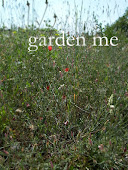Il giardino di frutta al grattacielo ha la forma di un trapezio, ci sono 5 alberi e rastrelliere per biciclette.
Questa sera alla riunione condominiale, cui partecipavano associazioni, funzionari pubblici, rappresentanti delle forze dell'ordine, giornalisti e cittadini, la combinazione era felice.
Non ero mai stato ad una riunione al grattacielo. Le persone stavano ragionando su come vivere meglio. Il giardino di frutta in quel momento era al buio e si caricava di una forza, la stessa, che avevo percepito la mattina in cui a Londra avevo piantato, con i ragazzi di Trees for Cities, alcuni alberelli ai piedi di una casa al margine della citta' al margine della scuola al margine del supermercato al margine delle cose che hanno un nome diverso e che non si conoscono mai se non si va a cercarle.
Great Dixter e Christopher Lloyd. Mi e' venuto in mente, mentre ascoltavo, il piu' alto livello della raffinatezza del giardiniere.
Il giardino e' un giardino, nulla piu', le piante sono piante, nulla piu', ma hanno un potere: il potere di far credere che un giardino migliori la vita. Il potere di sedurre. E' la manifestazione piu' chiaramente percepibile del significato del bello presso i Greci: quella identita' di Bello e di Buono che si apre alla percezione sensoriale, dalla superficiale alla piu' sottile, commuovendo una persona. Trasformando una persona. Non e' una piccola cosa.
C'e' qualcosa di strano in tutto questo e mi sorprendo: come posso avere in testa il giardino di Lloyd mentre sono seduto al pianterreno del grattacielo. Non e' astrazione o fuga. Credo invece sia quel potere. Sono le assonanze di cui parlo spesso, che attraversano i giardini e gli spazi verdi curati e che tengono insieme, in uno spazio concluso, lo stato migliore di cui la mente umana possa godere. E' l'eredita' culturale che al deserto oppone il giardino, con la piu' tenace e caparbia delle volonta'. E' il potere del giardino ed insieme la forza della volonta' che lo vuole e lo crea. Ecco come Great Dixter ha fatto capolino alla riunione.
Il Giardino ben temperato e' il titolo che Lloyd diede al suo bellissimo libro di giardinaggio. Ben temperato come il clavicembalo era per Bach o il buon governo delle citta', quello che segue le virtu' cardinali.
La temperanza tra le cose diverse. Questa sera c'era la temperanza alla riunione. Il giardino si caricava.
Iscriviti a:
Commenti sul post (Atom)
................................................
Ecological Planting Design
Ecological Planting Design
What do these words mean? Some principles of ecological planting design. (from the book: "A New Naturalism" by C. Heatherington, J. Sargeant, Packard Publishing, Chichester)
Real structural plants marked down into the Planting Plan. The other plants put randomly into the matrix: No. of plants per msq of the grid, randomly intermingling (even tall plants). Succession through the year.
Complete perennial weed control.
High planting density. Close planting allows the plants to quickly form a covering to shade out weeds.
Use perennials and grasses creating planting specifications that can be placed almost randomly.
Matrix: layers (successional planting for seasonal interest) of vegetation that make up un intermingling (random-scattering) planting scheme: below the surface, the mat forming plants happy in semi-shade, and the layer of sun-loving perennials.
Plants are placed completely randomly: planting individual plants, groups of two, or grouping plants to give the impression of their having dispersed naturally. Even more with the use of individual emergent plants (singletons) that do not self-seed, dispersed through the planting.
An intricate matrix of small plants underscores simple combinations of larger perennials placed randomly in twos or threes giving the illusion of having seeded from a larger group.
The dispersion effect is maintained and enhanced by the natural rhythm of the grasses that give consistency to the design. They flow round the garden while the taller perennials form visual anchors.
Allow self-seeding (dynamism) using a competitive static plant to prevent self-seeders from taking over: Aruncus to control self-seeding Angelica.
Sustainable plant communities based on selection (plants chosen for their suitability to the soil conditions and matched for their competitiveness) and proportions (balance ephemeral plants with static forms and combinations such as clumpforming perennials that do not need dividing: 20% ephemeral, self-seeding plants, 80% static plants) of the different species, dependent on their flowering season (a smaller numbers of early-flowering perennials, from woodland edges, which will emerge to give a carpet of green in the spring and will be happy in semi-shade later in the year, followed by a larger proportion of the taller-growing perennials which keep their form and seed-heads into the autumn and the winter).
Year-round interest and a naturalistic intermingling of plant forms.
Ecological compatibility in terms of plants suitability to the site and plants competitive ability to mach each other.
Working with seed mixes and randomly planted mixtures.
Perennials laid out in clumps and Stipa tenuissima dotted in the gaps. Over the time the grass forms drifts around the more static perennials and shrublike planting while the verbascum and kniphofia disperse naturally throughout the steppe.
Accents: Select strong, long lasting vertical forms with a good winter seed-heads. Select plants that will not self-seed, unless a natural dispersion model is required.
Planes: if designing a monoculture or with a limited palette, more competitive plants may be selected to prevent seeding of other plants into the group.
Drifts: to create drifts of naturalistic planting that are static in their shape over time use not-naturalizing, not self-seeding, not running plants.
Create naturalistic blocks for the seeding plants to drift around. For the static forms select plants that do not allow the ephemerals to seed into them.
Blocks: use not-naturalizing species, in high densities, in large groups.
Select compatible plants of similar competitiveness to allow for high-density planting (to enable planting at high density in small gardens).
Achieve rhythm by repeating colours and forms over a large-scale planting.


Nessun commento:
Posta un commento